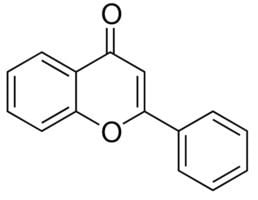Formula C15H10O2 | ||
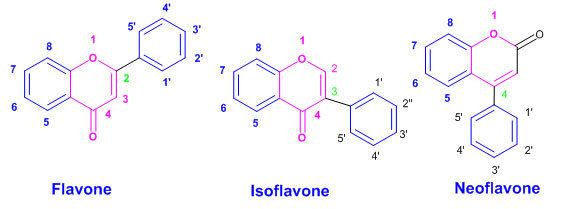 | ||
Phenolic compounds flavonoids flavones and flavonols
Flavones (flavus = yellow), are a class of flavonoids based on the backbone of 2-phenylchromen-4-one (2-phenyl-1-benzopyran-4-one) shown on the right.
Contents
- Phenolic compounds flavonoids flavones and flavonols
- Intake and putative beneficial effects
- Drug interactions
- Organic chemistry
- WesselyMoser rearrangement
- References

Natural flavones include apigenin (4',5,7-trihydroxyflavone), luteolin (3',4',5,7-tetrahydroxyflavone), tangeritin (4',5,6,7,8-pentamethoxyflavone), chrysin (5,7-dihydroxyflavone), 6-hydroxyflavone, baicalein (5,6,7-trihydroxyflavone), scutellarein (5,6,7,4'-tetrahydroxyflavone), and wogonin (5,7-dihydroxy-8-methoxyflavone). Synthetic flavones include diosmin, flavoxate, and 7,8-dihydroxyflavone.
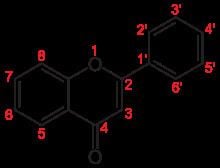
Flavone also refers to the flavone compound 2-phenyl-4H-chromen-4-one.
Intake and putative beneficial effects
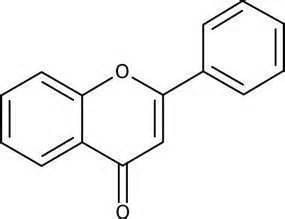
Flavones are mainly found in cereals and herbs. In the West, the estimated daily intake of flavones is in the range 20–50 mg per day. In recent years, scientific and public interest in flavones has grown, but there remains insufficient evidence that flavones have any effect in the human body. As interpreted by the Linus Pauling Institute, dietary flavones, and more generally polyphenols, have little or no direct antioxidant food value following digestion. Not like controlled test tube conditions, the fate of flavones or polyphenols in vivo shows they are poorly conserved (less than 5%), with most of what is absorbed existing as metabolites modified during digestion and destined for rapid excretion.
Drug interactions
Flavones have effects on CYP (P450) activity which are enzymes that metabolize most drugs in the body.
Organic chemistry
In organic chemistry several methods exist for the synthesis of flavones:
Another method is the dehydrative cyclization of certain 1,3-diaryl diketones
this particular study making use of an ionic liquid solvent and microwave irradiation.
Wessely–Moser rearrangement
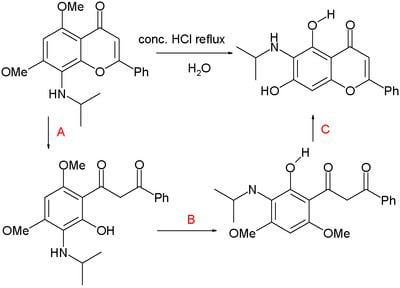
The Wessely–Moser rearrangement (1930) has been an important tool in structure elucidation of flavonoids. It involves the conversion of 5,7,8-trimethoxyflavone into 5,6,7-trihydroxyflavone on hydrolysis of the methoxy groups to phenol groups. It also has synthetic potential for example:
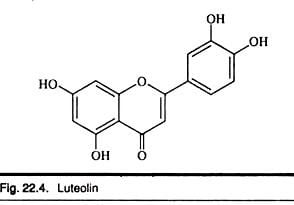
This rearrangement reaction takes place in several steps: A ring opening to the diketone, B bond rotation with formation of a favorable acetylacetone-like phenyl-ketone interaction and C hydrolysis of two methoxy groups and ring closure.
